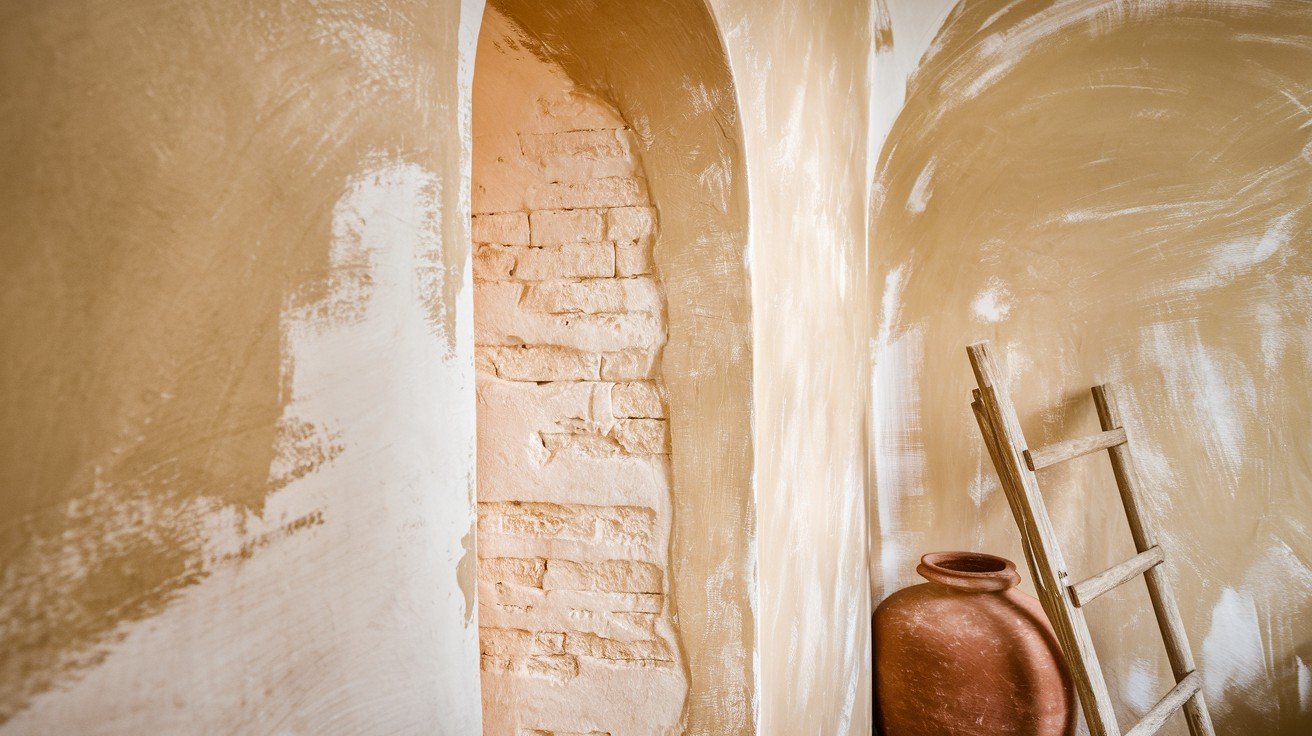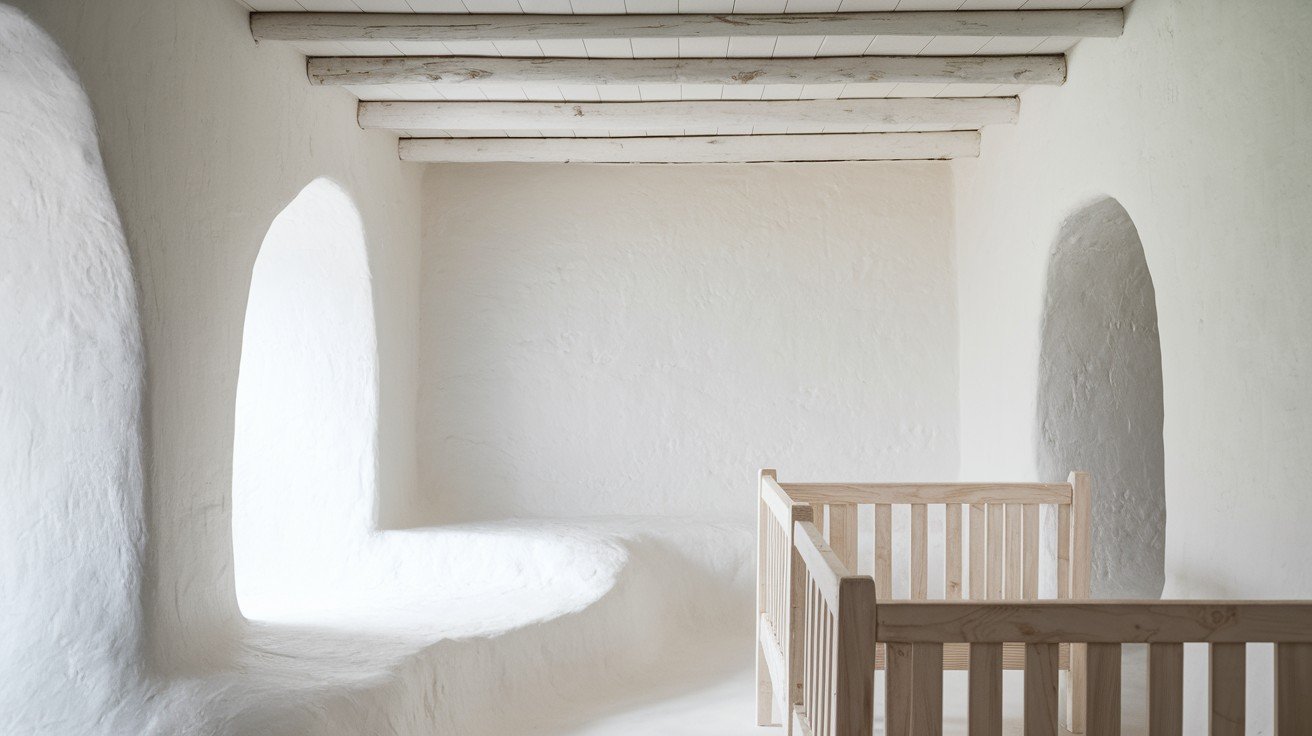When it comes to giving your walls a fresh, natural look, two classic options often come to mind: limewash and whitewash.
Both offer that coveted rustic charm, but they’re surprisingly different in how they work and what they deliver.
Maybe you’ve spotted those gorgeous textured walls on Instagram and wondered how to achieve that same organic feel in your own space.
Or perhaps you’re restoring an older home and want to honor its character while making it feel current.
The limewash vs whitewash debate isn’t just about aesthetics – it’s about choosing the right technique for your specific walls, lifestyle, and long-term goals.
One creates a living, breathing surface that develops character over time, while the other offers simplicity and versatility.
Let’s break down everything you need to know to make the perfect choice for your home.
Limewash vs Whitewash: Key Differences
|
Feature |
Limewash |
Whitewash |
|
Base Material |
Slaked lime + water |
Lime + water or diluted paint |
|
Surface Compatibility |
Porous surfaces only |
Most surfaces (with prep) |
|
Finish |
Textured, aged look |
Smooth, muted appearance |
|
Durability |
Long-lasting on porous materials |
May fade or rub off more easily |
|
Color Options |
Naturally tinted, earthy tones |
Primarily white or off-white |
This table makes it easy to compare the key differences between limewash and whitewash at a glance, helping you decide which option works best for your specific project needs.
What Is Limewash?

Composition
Limewash is a natural coating made from slaked lime (calcium hydroxide) mixed with water. This simple combination creates a pure, breathable finish that’s been used for centuries.
You can add natural pigments like iron oxide or clay to achieve different earthy tones, though the color palette remains subtle and organic.
Application
This coating works best on porous surfaces such as brick, stone, and plaster. The application process requires patience; you’ll typically need multiple coats with proper drying time between each layer.
Before applying, the surface must be pre-wetted to ensure proper absorption and bonding. This prep work is crucial for achieving the best results.
Appearance
Limewash creates a distinctive chalky, matte finish with subtle texture variations. Its slightly translucent quality allows the underlying surface details to show through, giving walls depth and character.
One of its most appealing features is how it ages, developing a beautiful patina over time that adds to its authentic, lived-in charm.
What Is Whitewash?

Composition
Traditional whitewash combines water with hydrated lime, often enhanced with salt or glue for better adhesion and durability.
Modern versions have evolved to include diluted white paint or PVA (polyvinyl acetate) binders, making them more user-friendly while maintaining that classic whitewashed look.
Application
Whitewash is much more forgiving than its limewash counterpart. You can apply it to a broader range of surfaces without extensive preparation, and most projects only require one or two coats to achieve good coverage.
The quick-drying formula means you can complete your project faster with less waiting time between applications.
Appearance
This coating produces a softer, more opaque white finish compared to limewash. It creates a characteristic hazy or cloudy appearance that gives walls a gentle, muted quality.
The result is more uniform in coverage than limewash, offering a cleaner, more consistent look across the entire surface without the textural variations that define limewash.
Pros of Limewash
Natural and Eco-Friendly: Made from lime and water, making it a sustainable choice. Contains no harmful chemicals or synthetic additives, perfect for environmentally conscious homeowners.
Breathable and Mold-Resistant: Ideal for old or moisture-prone buildings. Allows walls to naturally regulate humidity while preventing mold growth due to lime’s alkaline properties.
Unique Patina Effect: Ages beautifully over time for an old-world charm. Develops character and depth as it weathers, creating an authentic vintage appearance.
Low-VOC: Safe for indoor use, even in poorly ventilated areas. Emits virtually no toxic fumes, making it safe for bedrooms, nurseries, and enclosed spaces.
Cons of Limewash
Limited to Porous Surfaces: Doesn’t adhere well to sealed or glossy walls. Requires unsealed brick, stone, or plaster to bond properly, limiting your surface options.
More Prep Work Required: Surfaces need to be dampened and cleaned. Demands thorough cleaning and pre-wetting, making it more time-intensive than other finishes.
Color Limitation: Typically available in earthy or muted tones unless custom pigmented. Natural pigments restrict you to subtle, organic colors rather than bold or bright options.
Reapplication May Be Needed: Needs touch-ups as it weathers (especially outdoors). Requires periodic maintenance to maintain appearance, particularly on exterior surfaces.
Pros of Whitewash
Easy to Apply: Requires fewer coats and less prep. The simple application process makes it perfect for DIY projects without extensive experience.
Versatile: Works on a variety of surfaces, including wood, brick, and drywall. Adapts to most wall types with minimal surface preparation required.
Budget-Friendly: Often made from diluted paint or common ingredients. A cost-effective option that delivers great results without breaking your renovation budget.
Soft, Clean Aesthetic: Offers a bright, airy look perfect for modern farmhouse or coastal styles. Creates an instantly fresh, light appearance that brightens any space.
Cons of Whitewash
Less Durable: Can wear off more easily, especially in high-traffic or damp areas. May require more frequent touch-ups in areas with heavy use or moisture exposure.
Not Breathable: May trap moisture if applied over porous materials. Can seal surfaces too well, potentially causing moisture problems in older buildings.
Less Depth of Finish: More uniform appearance, lacks the layered patina of limewash. Provides a flatter, less textured look without the organic variation that creates visual interest.
Can Flake or Peel: Especially if applied without proper prep or sealing. It may deteriorate over time if surface preparation or application technique isn’t adequate.
How to Choose the Right One for Your Project?
|
Factor |
Choose Limewash If |
Choose Whitewash If |
|
Wall Material |
You have porous surfaces like brick, stone, or unsealed plaster |
You have non-porous surfaces like drywall, sealed wood, or painted walls |
|
Desired Aesthetic |
You want an aged, textured look with character and depth |
You prefer a soft, clean, uniform appearance |
|
Long-term Durability & Maintenance |
You don’t mind periodic touch-ups for authentic aging |
You want low-maintenance with occasional reapplication |
|
Interior vs Exterior Application |
Perfect for both, especially historic or breathable wall systems |
Better for interiors or protected exterior areas |
This table helps you quickly match your specific project needs with the right coating choice based on the four key decision factors.
Conclusion
Choosing between limewash and whitewash comes down to your specific needs and style preferences.
Limewash offers authentic character with its natural composition and aging patina, making it perfect for historic homes or anyone seeking that organic, lived-in look. However, it requires more preparation and works only on porous surfaces.
Whitewash provides versatility and ease of application, working on various surfaces with minimal prep work.
It’s budget-friendly and great for achieving that clean, farmhouse aesthetic quickly.
Consider your wall material, desired appearance, maintenance expectations, and application location.
If you value authenticity and don’t mind the extra work, limewash creates stunning results.
For straightforward application and broader surface compatibility, whitewash is your reliable choice. Both deliver beautiful, timeless finishes when matched to the right project.
Frequently Asked Questions
Can I apply limewash over painted walls?
No, limewash needs porous surfaces to bond properly and won’t adhere to sealed or painted surfaces.
How long does whitewash last compared to limewash?
Whitewash typically lasts 3-5 years indoors, while limewash can last decades on appropriate porous surfaces.
Which option is better for high-humidity areas?
Limewash is superior for humidity as it’s naturally breathable and mold-resistant, unlike less breathable whitewash.

